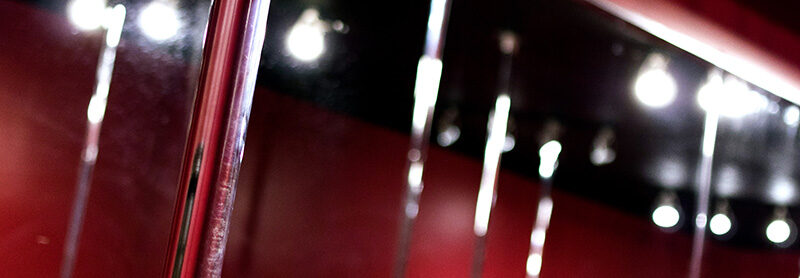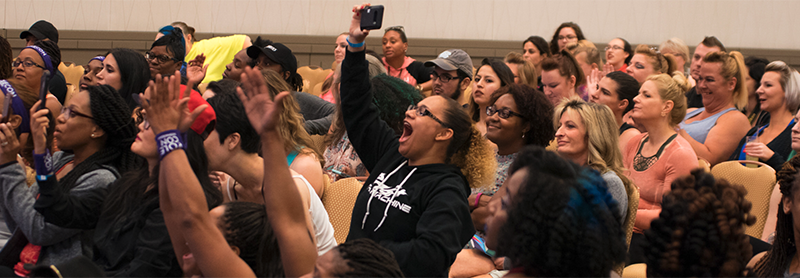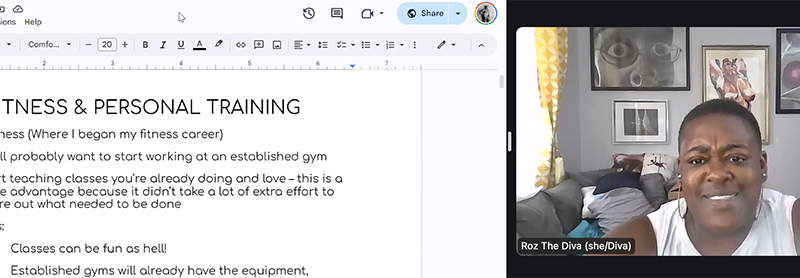[memberonly level=“Group Membership for Businesses of 2-5 individuals, Student, Individual or Solo-Preneur”] Please note that…

Do you have a maintenance program for your poles?
As a pole dancer, how often do you take a hard look at your equipment?
Do you have a maintenance program for maintaining—and eventually—replacing your poles?
Check out these tips for how to increase the longevity of your poles through a regular maintenance plan.
Please note, because there are several different pole manufacturers and pole types, the tips below are general and not for any specific pole brand. Refer to your instruction manual or the manufacturer’s website for more information.
Buy for Quality
There are now several reputable pole manufacturers available around the world such as our partners X-POLE (IPIA members receive a discount off their equipment purchase) or Gaia Pole (IPIA members receive a discount off their equipment purchase), Lupit, and PoleDanzer Poles to name a few.
Buying a “quality pole” means buying a pole that is specifically designed for professional use.
Something that you purchase as a “gag” gift is likely not a safe pole for the demands of regular teaching, training, and performing. Many pole manufacturers have different levels of poles depending on the demands for the poles (competition grade or studio grade poles are designed to be more durable than those created for home use, for instance) and/or poles that have different capabilities (such as just static or spin/static). Make sure to choose the one appropriate for your intended usage.
Tension based poles are common but if you own a studio or have a dedicated space to train (where you don’t have to regularly remove your pole(s), consider getting a permanent ceiling mount for your poles. You may also use a stage or free-standing pole that does not attach at the ceiling but has a heavy base. Before buying a stage or free-standing pole, consider what type of pole dancing as well as what type of space you have. If you do a lot of floorwork or many dynamic moves, a free-standing pole may not be ideal. However, if you cannot attach your pole to your ceiling, make sure you get the sturdiest base available depending on your intended teaching/training needs.
Some poles are a single piece while others are modular and have interchangeable parts connected by a joint.
All these differences in pole structure, pole durability, and pole finish (more below on finish) will dictate what kind of maintenance you should do on your poles to increase the lifespan of your equipment and to be safe while teaching, training, or performing.
Proposed Cleaning and Maintenance Schedule
Regardless of what specific pole you choose to purchase and install in your space, you would benefit from creating a cleaning and maintenance schedule on a daily, weekly, monthly, quarterly, and annual basis for the lifetime of your poles.
Depending on the brand of pole and the usage, expect to replace your poles every 2-5 years. If you are in a very humid environment or in an environment with drastic temperature swings, you may need to maintain or replace your pole more frequently.
Consider creating a maintenance chart to confirm that all your poles are being maintained regularly by yourself or by others. Note the type of maintenance, the date of maintenance, the person doing the maintenance, and any relevant notes. IPIA members download a sample pole maintenance chart here.
Most maintenance is visual in nature, noting potential issues before they become critical issues. Some maintenance requires specialized tools or skills. Refer to your manufacturer’s directions as needed.
Daily/after each use
Clean your poles after every use:
- Never use anything abrasive to clean poles such as a scrubbing pad.
- Never use just water to clean your poles.
- Refer to your manufacturer’s instructions for ideal cleaning for you pole.
- Microfiber towels are ideal for pole cleaning (with and without a cleaner as noted below) but paper towels also work.
- Ensure students remove all metal jewelry before touching the pole as it can damage the finish and decrease the longevity of your pole.
Clean your pole using the appropriate cleaner depending on the material of the pole:
- Chrome and Stainless Steel: Rubbing alcohol is the most common cleaner. Some pole and grip manufacturers make their own proprietary cleaner.
- Silicone: silicone toy cleaner or mild dish detergent and water.
- Brass: microfiber towel (some manufacturers say microfiber tower + alcohol).
- Power coated: mild dish detergent and water.
- Other: see manufacturer’s directions.
Weekly
- Check ceiling to floor tension. Weather changes can impact tension because of natural changes in the pole material, especially changes in humidity.
- Check silicone base and top if relevant. If the silicone is damaged, buy a replacement from your manufacturer. **If your ceiling is a false (not solid) ceiling, and/or your tension-based pole was not installed correctly on a stable beam, you may damage your ceiling and your pole will not be safe to pole on.**
- Check screws for stripping (the tool to tighten the pole screws “spins” when you insert it – that means the screw, or the head of the tool has been “stripped”) and tension. Do not over tighten your pole’s screws or your pole. Replace screws before they are completely stripped as needed. Pole manufacturers often sell replacement screws or they can be found at many hardware stores.
- Check your tools for rounding (see note above). Replace your tool as needed. Pole manufacturers often sell replacement tools or they can be found at many hardware stores.
Monthly
Review status of your poles’ finish depending on the type of material:
- Chrome poles: rubbing the chrome off (pole is no longer shiny). This is very important for grip and for people with nickel allergies, this can cause a skin reaction. Additionally, the pole may begin to rust when the chrome wears off completely. The pole is unsafe to use when it is rusting and should be replaced. Finish wearing off starts the “timer” of poles to be replaced – the length of time depends on usage, daily cleaning habits, and humidity in your space. Students will report less grip with less finish.
- Stainless pole: finish dulls. Poles could be refinished by a professional machinist.
- Brass pole: finish dulls. Brass poles should be polished regularly with brass cleaner.
- Pole stages or freestanding poles: review wear and tear of the pole portion as noted above depending on material and review any wear and tear of the base materials. Replace parts as needed.
- Other materials: look for cracking, gouges, color changes and other abrasions. Depending on the material, pole may need to be replaced. Review your manufacture’s materials for more information.
Quarterly
- Review for joints twisting (for jointed poles only). Pole should be taken down and joints attempted to be realigned. Twisting usually gets worse if not re-aligned early on.
- Review for joints over lapping and causing a metal lip as one portion of the pole moves under the other portion. This metal lip can be sharp and can cut students. This can happen if joint twisting is not taken care of early on.
- Some poles may require quarterly lubrication which requires the poles to be taken down and individually maintained.
Yearly
- Review all notes from previous preventative maintenance periods that year.
- Replace entire poles or pieces as needed.
- Review studio, personal or business budget to allow for future replacements.
Every 2-5 years
- Consider replacing your poles based on wear and usage. Budget accordingly.
Storage
All poles that are not in active use should be stored in a cool, dry place. For humid climates, consider using a dehumidifier in your space.
A professional pole is a CRITICAL piece of equipment for the pole business owner. Make sure that any poles you own are maintained regular according to this proposed schedule or one that works for your situation. If you work in a studio, club, or other environment where you are not primarily responsible for equipment maintenance, forward this post to the person who is. A maintained pole is a safer pole.



